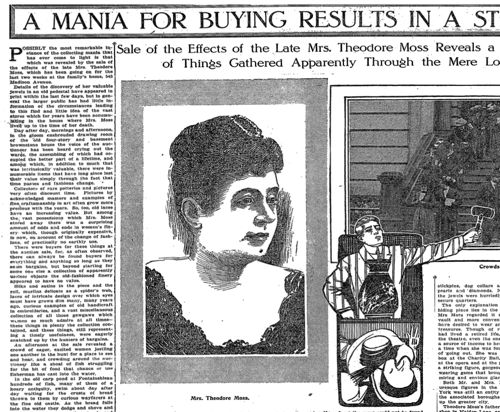
Click to get the whole 1910 article as a PDF from SundayMagazine.org
“A Mania For Buying,” announced the headline in the May 1, 1910 issue of The New York Times Magazine. The article concerns the liquidation of the “effects” of one Mrs. Theodore Moss: “A Remarkable Assortment of Things Gathered Apparently Through The Mere Love of Shopping.” While the piece hedges here and there in a not-particularly well-articulated attempt to distinguish between positive and negative aspects of material want, those words from the subhead give away the unnamed writer’s real attitude with its moralizing “mere.”
I read this article courtesy of the web site SundayMagazine.org, which makes available in PDF form “the most interesting articles” from the Times Magazine from 100 years ago, every week. I’m a great believer in reading this sort of thing: Actual contemporary views of the past, as opposed to the selectively filtered versions fed to us current pundits and gurus who twist history to fit whatever theory they happen to peddling about “today’s consumer.” (And obviously, given my day job, this particular source of special interest.) So here, what we have, is a 1910 assessment of collecting, hoarding, materialism. What does it tell us?
For two weeks, we learn, the spoils of Mrs. Moss’s “collecting mania” have been auctioned off, day after day, from her former home at 543 Madison Ave. Her name was Octavia A. Husted when she married Mr. Moss; she came from “old Revolutionary stock.” As Mr. Moss’s fortunes rose, the article allows, both he and his wife developed luxurious tastes. But back then, at least, Mrs. Moss’s “fondness for fine fabrics” and the like was no mania. Rather, it simply led her “collect” a variety of stuff — “not for hoarding, but merely because she liked looking and such things and liked to have them in her possession.” Thus she owned some real valuables; there is a long (and pretty unlikely) aside about jewels discovered by accident by someone who knocked over a pedestal that turned out to be stuffed with jewelry and gems.
But somewhere along the way – I guess after Mr. Moss died, although the piece isn’t really clear on that – something seems to have changed. By the time of her own death, Mrs. Moss had filled “at least” 10 of her four-story home’s 17 rooms with objects of all sorts. (Supposedly, in another hard-to-believe detail, she carried the keys to these rooms about … and no one else could enter.) Conceding the presence of worthwhile items, the article swiftly shifts to a judgmental, and condescending tone: “there were innumerable items that have long since lost their value simply through the fact that time passes and fashions change.” Let that be a lesson to you, readers! Time passes, fashions change, it is a simple fact that much of what the market offers will lose value.
This vaguely self-helpy tut-tutting continues:
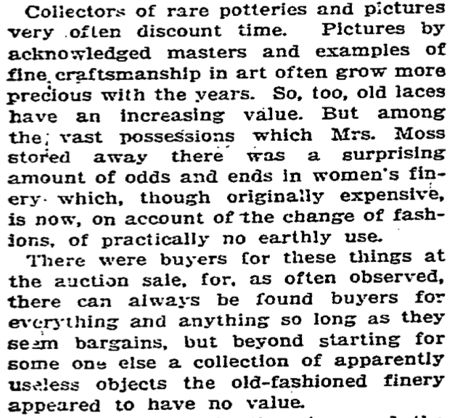
No value, y’all.
Note, if you will, the heavy marketplace bias in these judgments. We cannot say what Mrs. Moss’s things meant to her. We can only say what they “mean” to the market, which renders its verdict in the form of a sales price, period.
Along the way, we’re given rather blatant cues to draw a line around “shopping,” particularly of the enthusiastic sort, as a foolish and distinctly feminine pursuit: Those attending the auction of the Moss pile seem to be “excited women jostling one another,” as the writer puts it, driving home his (one assumes!) point of view by drawing a comparison to fish mindlessly swarming crusts flung into their line of sight.
You may read the full article to learn how the Mos fortune was acquired, and how great chunks of it were deployed, all in rather repetitive detail. But the piece’s guiding “idea,” as we say in the 21st Century magazine game, concerns the relation between people and things. Conveniently, on this score, Mrs. Moss’s effects include a “well-thumbed” book on the subject of collecting, which our correspondent seems at least to have skimmed. Evidently this volume was pro-“collecting.” Please continue…
 JUST PRICELESS:
JUST PRICELESS:
Assessing the value of an art object that sells itself.
…. Even if [he] won the object, created by a young artist named Caleb Larsen, his ownership would be tentative: the technical innards of “A Tool to Deceive and Slaughter” carried a program that would relist the thing on eBay every week, forever.
Read the column in the May 9, 2010, New York Times Magazine, or here.
Discuss, make fun of, or praise this column to the skies at the Consumed Facebook page.
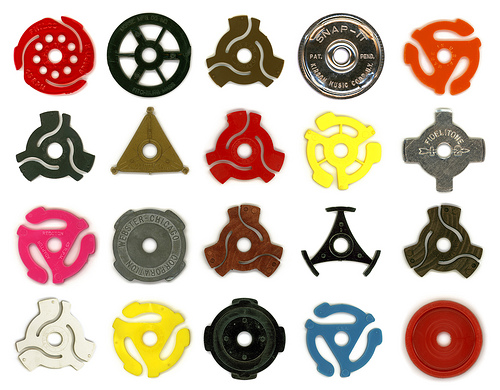
By Glen Mullaly. Click for more.
Part of an occasional series.
Posted Under:
Just Looking by Rob Walker on May 8, 2010
Comments Off on Pictures of Stuff, Cont’d: 45 Adapters
Via Not A Real Thing: Below are images made by Flickr user Max Capacity. I gather this person gets these digital cityscape sklyines from video games and adjusts them into the works you see below. Pretty great, if you ask me. (I know you didn’t ask me.) Click any image to go the Max Capacity Flickr image.



Posted Under:
Just Looking by Rob Walker on May 8, 2010
Comments Off on Weekend visuals
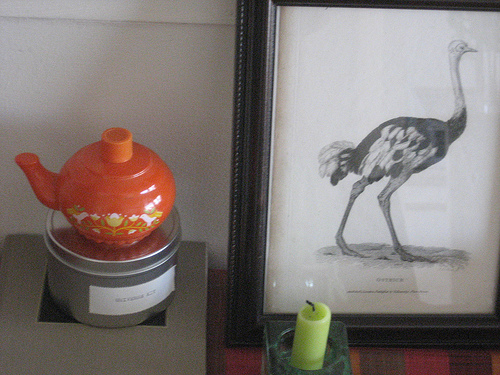
A v3 Significant Object in its new home
This morning, Significant Objects (the side project I work on with co-founder Joshua Glenn), wrapped up its third volume. With our final v3 auction concluded, we converted $58.28 worth of thrift-shop bric-a-brac, paired with 50 stories by our amazing contributing writers, into a whopping $1,748.82 — which will now be donated to Girls Write Now.
GWN is a nonprofit that “provides guidance, support, and opportunities for New York City’s underserved or at-risk high school girls, enabling them to develop their creative, independent voices, explore careers in professional writing, and learn how to make healthy choices in school, career, and life.” While it’ s obviously too late to help GWN by buying a Significant Object, you can still support this fine organization by purchasing one of the limited-edition yet highly affordable Significant Objects v3 prints by Kate Bingaman-Burt, from 20X200.
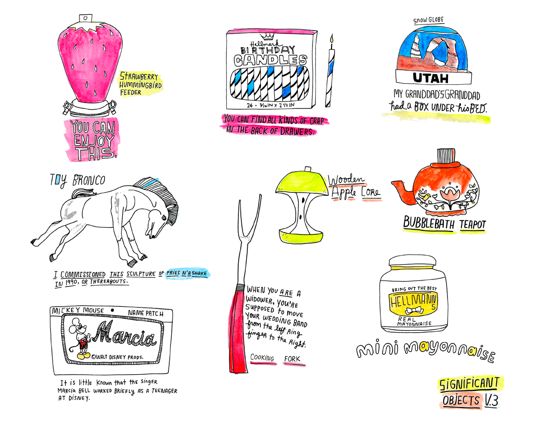
One of Kate Bingaman-Burt S.O. v3 creations
Stay tuned to Significant Objects for news of that project’s future.
Posted Under:
Things/Thinking by Rob Walker on May 7, 2010
Comments Off on Significant Objects v3 concludes; $1,748.82 raised for Girls Write Now
- ‘One Hour Photo’: Exhibition of images that will “be disposed of” after one hour. “By forcing a shelf life on an art object [the show] takes aim at a Facebooking, Twittering world of mediated experience. We’re so busy reading about other people’s experiences that we have fewer and fewer experiences of our own. In “One Hour Photo,” you either see the picture or you don’t.”
- The Limitations Of Today’s Soundproofing Magic & The Perennial Noise of Marketing: A note on trying to buy quietness.
- Disabled Alt poses in risque photos for anti-American Apparel themed art project: Carles weighs in at Hipster Runoff.
- The Year of the Drone: “Our study shows that the 129 reported drone strikes in northwest Pakistan, including 34 in 2010, from 2004 to the present have killed approximately between 898 and 1,336 individuals, of whom around 609 to 958 were described as militants in reliable press accounts. Thus, the true civilian fatality rate since 2004 according to our analysis is approximately 30 percent.”
- Twitter: No matter what Hollywood thinks, it’s totally uncool for kids: “I don’t know one high schooler that uses Twitter,” says teen. Friend adds: “It’s something for adults who feel like it makes them hip or something. Meanwhile: Twitter archive at Library of Congress could help redefine history’s scope.
- When Fans Become Advertisers: Interview with Smallville superfan about efforts to fund, produce, and air a “professionally filmed” commercial on behalf of the show.
- Webism: “From the first, and in no small part because of its fervent supporters, it has felt less like a technology and more like a social movement—like communism, like feminism, like rock and roll.” Some priceless stuff in this monumental essay. Also some junk, but it’s worth wading through that. (Bonus: A very rare CORRECT usage of the word eponymous!)
- Surviving the Age of Humiliation: “All of us now live under the threat of easy and instant humiliation. It’s no longer just celebrities and business executives who need to think about aggressive reputation-protection and face-saving techniques. ‘Google yourself at least once a week,” advises Richard Levick, who heads a strategic communications firm in Washington, D.C. ‘You need to track what’s being said about you’ on blogs, message boards and social-networking websites.” While there’s a bit of a cranky worrywort tone to this piece, I think in places it’s getting at something legitimate.
- Nothing can stop the spendthrift American: “Spending rose 0.6 percent, but income rose only 0.3 percent. For the third straight month consumer spending rose faster than income. Not uncoincidentally, the personal savings rate has declined to the lowest point in 18 months.”
- A special report on television: The lazy medium: “There turns out to be an enormous gap between how people say they watch television and how they actually do. This gap contains clues to why television is so successful, and why so many attempts to transform it through technology have failed.” I look forward to the marketing guru class continuing to ignore this sort of information, and sticking with meaningless poll results to make their arguments.
- How to Design Like You Give a Damn in 5 Easy Steps: The funniest headline I’ve seen in a while. Here’s a thought: If you need a “5 easy steps” primer on giving a damn, you don’t actually give a damn.
These links compiled via delicious, and repurposed here with plug-in Postalicious. Not enough stuff? Not the stuff you wanted? Try visiting unconsumption.tumblr.com, murketing.tumblr.com, and/or the Consumed Facebook page.

By Stephen Doyle. Click for more.
Junk Culture strikes again with this post pointing to a photo-filled interview with Stephen Doyle. Excerpt:
Q Why work with paper and books?
Books are where ideas come from. The book is such a great form. Before doing these works, I was making concrete casts of books. What interested me was, if you take all the information out, does the form still have any power?
Somewhere along the line I started wondering, well, what does happen when you take the ideas out? So, I started taking out the binding and the pages and setting the words free. And I’ve been working from there.
This post is part of a series.

By Stephen Doyle. Click for more.
Posted Under:
Artists by Rob Walker on May 7, 2010
Comments Off on Books, the idea: Paper sculpture
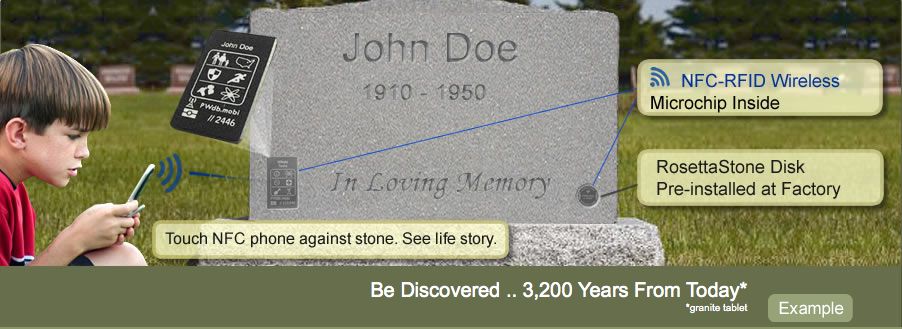
Click for more information.
Here is RosettaStone, a product of Objecs LLC. I read about it in Obit Magazine. As I understand it, it’s a piece of granite inlaid with symbols of your choosing, and it contains digitally accessible information about you. It’s meant to be embedded in your tombstone. But you can buy it now, and start crafting the message you want to leave behind, about you, which will be available to people with the right cellphones, or whatever, for upwards of 3,000 years. You can “be discovered” by citizens of the future, as the company’s site says. It also says: “Be more than a name and date for future generations.”
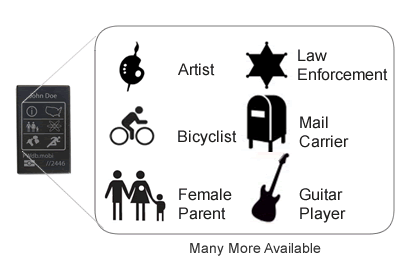
Some choices. Click for more information.
Obit Mag interviewed a man who bought one:
Hill has been updating and frequently rewriting the text he wants to accompany his RosettaStone entries frequently.
“If a truck hits me tomorrow, I’ve got some words that will last forever and that’s real,” he said. “It’s hard to write at first. You’re thinking, ‘Wow. These are my last words.’”
Wow, indeed. Also, “for a limited time,” you can get a “tablet case,” so you can carry this around with you, I suppose, until you die.
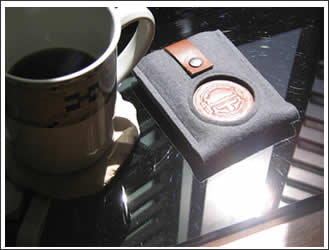
“Limited time” offer. Click for more.
Obit Mag says “fewer than 100” have been sold.
The scenario described in this post by Douglas McLennan of the very useful ArtsJournal site, is pretty much exactly what happened to this site last February — and kept Murketing.com inaccessible to most readers for more than a week. I highly recommend reading McLennan’s account of his experience of being labeled an “attack page” if you are the proprietor of your own site. I agree with basically all of McLennan’s points, most notably this:
In my case (and probably for many others), the Google system for getting unblocked from the rest of the web sucks. Google offers low information about your status once you’ve been blocked and no information after you’ve done what they’ve suggested. For a news site that depends on constant updating, three days being blocked from most of the web is devastating.
Obviously the consequences for a site like mine aren’t that big a deal — I’m just some guy. But for a site like McLennan’s it really can be a serious problem. I’m glad his specific issue finally got resolved, and I hope the broader issue gets some attention.
Posted Under:
Backlashing by Rob Walker on May 6, 2010
Comments Off on ArtsJournal describes being hobbled by Google
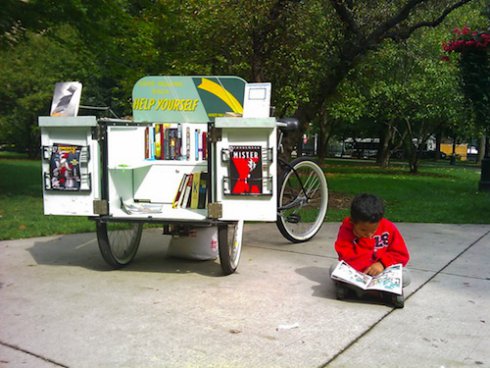
Click for more info.
Okay, this is a bit of a cheat, because it involves friend of Murketing Gabriel Levinson, but I have to throw The Book Bike into this series. And in a way, it fits perfectly. Here’s some info:
Everyone has the right to build and cherish a private library.
With this in mind, we present The Book Bike: a custom-built tricycle stocked with 200 lbs of free books. Since July of 2008, The Book Bike has been responsible for placing over 3,000 new and used books into peoples’ hands. In spring and summer, you’ll find The Book Bike at Chicago public parks on the weekends; anyone who wants a book is invited to take something home to read.
In the summer of 2010, The Book Bike puts a spotlight on independent publishers: from hand-crafted zines to literary magazines and books, The Book Bike is a unique resource of the global independent literary scene….
More here. Oh, and if you’re in Chicago and encounter the Book Bike: I’ll be donating some back issues (2008 and 2007) of my annual zine, Where Were You?
Posted Under:
Pleasing by Rob Walker on May 6, 2010
Comments Off on Books, the idea, cont’d: The Book Bike
Thanks, everybody, for making confessing everything on Facebook seem so normal. Despite “connecting” us more securely with others online, social networking has made our real-life, non-online identities more insecure than ever. With a new tool to investigate what we don’t immediately disclose up front, there is less reason for anyone to take us at face value. I guess people just Google us while nodding along and ignoring what we say.
This long excursus at n+1 makes a similar point about targeted ads pinpointing our place on what Facebook calls the social graph: “Today we Google ourselves to see what the world knows about us; tomorrow we’ll just watch the ads.” And to take the idea to its logical conclusion: we will eventually Google ourselves to find out who we are.
Shortly after reading that enjoyable Marginal Utility passage — and particularly enjoying the line, “we will eventually Google ourselves to find out who we are” — I encountered this Slate item which promised to evaluate the ideological content of my “news diet” by assessing my browsing history. It’s not quite Googling the self to discover the self, but it’s on the right track. I gave it a whirl!
The tool scanned whatever it scans and promptly informed me: “At these sites, the readership is on average 49 percent conservative, 51 percent liberal.” Also: “Your isolation index is -31, meaning that, on the bell curve of all readers, your news diet is 31 percentage points to the left.” I don’t know what that latter bit means, and this “interactive test” is sort of based on and spun off a recent study that’s gotten a lot of attention for its assertion that news consumption online isn’t as ideologically isolationist as people assume. (The study seems to me to have been undertaken precisely to reach this “surprising” conclusion, and is full of caveats that make it, to me, totally meaningless.)
The Slate item further point to some other site, where there’s a similar setup that’s meant to deduce your gender from your browser URL history. I did that too. Result:
Likelihood of you being FEMALE is 63%
Likelihood of you being MALE is 37%
Hm. Well, I guess it’s still to early to deduce who I am by asking the Internet.
(Or… is it?)
Anyway, the Marginal Utility post cited above is much less frivolous than this little exercise, and worth reading.
 Well, funny you should ask! It’s a special issue on sustainable consumption and production, and there’s a review by me of an interesting book called Shopping Our Way to Safety, by Andrew Szasz, who makes great points about what he calls “inverted quarantine” — basically the (futile, he argues convincingly) idea that we can insulate ourselves from various ecological problems simply through individual consumption habits. I think you can read the review here.
Well, funny you should ask! It’s a special issue on sustainable consumption and production, and there’s a review by me of an interesting book called Shopping Our Way to Safety, by Andrew Szasz, who makes great points about what he calls “inverted quarantine” — basically the (futile, he argues convincingly) idea that we can insulate ourselves from various ecological problems simply through individual consumption habits. I think you can read the review here.
To my surprise, the issue also includes a nice review of Buying In.
I haven’t yet read any of the articles, but much of the issue looks promising. The introduction provides a kind of roadmap to what else is included.
Posted Under:
Consumer Behavior,
rw by Rob Walker on May 6, 2010
Comments Off on What’s in the Jan/Feb issue of the Journal of Industrial Ecology?
When I first saw these via Junk Culture, I thought it was something I’d covered previously in this series. But now I think not — I believe I was thinking of the Brian Dettmer work noted here. This is a different artist, Alexander Korzer-Robinson, making Book Objects:

"Development of the Human Heart," Click for more.
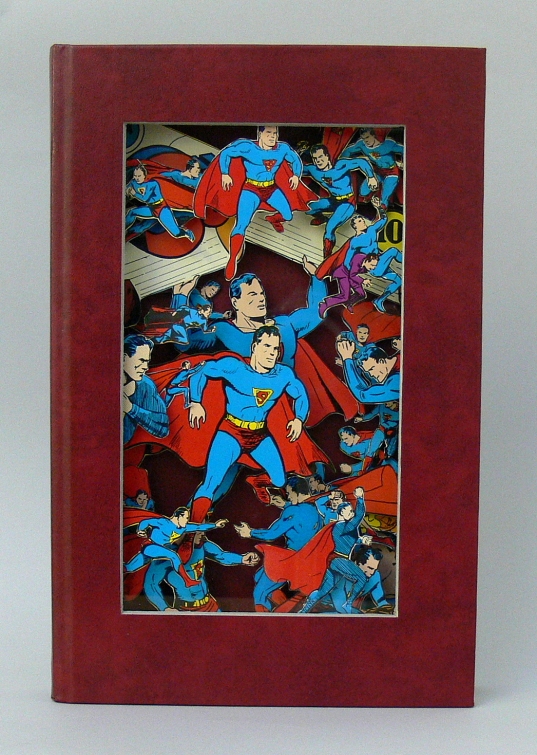
"To The Rescue," Click for more.
Posted Under:
Artists by Rob Walker on May 6, 2010
Comments Off on Books, the idea: Sculpture-objects
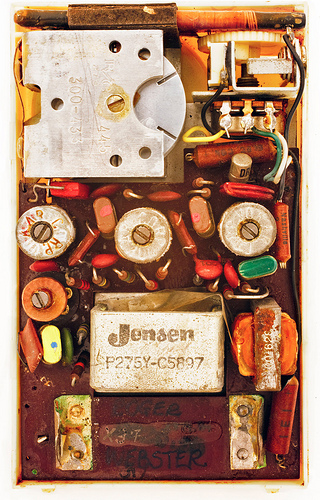
by Mark Richards; click for more.
Part of a series.
Posted Under:
Artists by Rob Walker on May 5, 2010
Comments Off on Pictures of stuff, cont’d: Radio innards
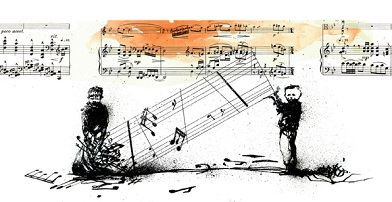
Illustration by Jeremy Traum; click for more on the first seven interpretations.
This month’s Atlantic includes a piece by Megan McArdle called The Freeloaders: How a generation of file-sharers is ruining the future of entertainment. It struck me as a rather retro argument at this late date, but Marc Weidenbaum over at Disquiet had a more interesting response. He critiques the essays specific points here. Even better than his written reply, however, is the musical one that he proceeded to curate.
Marc (a greatly respected friend) took particular issue with McArdle’s matter-of-fact equation of the fate of “the music industry” with the fate of music, which struck him as a non-contribution to the important discussion of copyright and culture in the digital era. He figures there has been, and will continue to be, plenty of worthwhile music made whether or not the present major record labels figure out profitable business models. Now, it’s easy to say that — but Marc did something specific to make his point. Noting that the piece was accompanied by an illustration that happens to incorporate a musical score (above), he invited musicians to compose new interpretations of the illustration. So far seven have done so — for free — and Marc has posted those on his site — also for free. It adds up to 55-minute musical response. Give it a listen here.
He has also has an open call out for more musical interpretation/responses; contact on Disquiet.com.
Posted Under:
Backlashing,
Music by Rob Walker on May 5, 2010
Comments Off on A musical rebuttal to an Altlantic piece about “freeloaders”





 "
"

 JUST PRICELESS:
JUST PRICELESS:




























 Kim Fellner's book
Kim Fellner's book  A
A